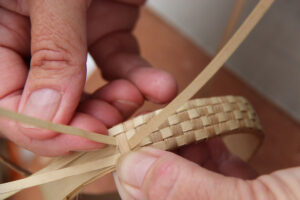Vision
Young children (aged birth to age 8) and their families are served by a comprehensive, high quality early care and education system, guided by competent, qualified professionals who support children’s growth and learning, who are supported in their professional development and equitably compensated.
Mission
We aim to create a pool of highly qualified early childhood professionals whose compensation is commensurate with the education, experience, and responsibilities of their positions and who receive salaries comparable to educators in other systems.
In line with this, we hope to promote recognition of the significant role of well trained early childhood professionals in the provision of high quality programs for young children.
Take a look at our history to learn more about the work our collaboration has done to strengthen early care and education professional development systems in Hawaiʻi.
Build it Better: How we support Early Childhood Professional Development Systems
Four Core Principles Applied Across Six Essential Policy Areas

Each time a policy is considered, created, or revised, everyone involved should begin by asking and answering these four foundational questions that are posed to address the four core principles:
- Professional Development System Integration—How does this policy increase professional development system integration across early childhood education sectors and settings from birth through 8?
- Quality Assurances—How does it include quality assurances for professional development?
- Diversity and Equitable Access—How does it support workforce diversity and equitable access to professional development?
- Compensation Parity—How does it increase compensation parity across early childhood education sectors and settings from birth through age 8?
HCYC draws inspiration from Build It Better, which outlines four core principles and six essential policy areas. You may access the Build It Better report here.
Source: National Association for the Education of Young Children. (2016). Build it better: Indicators of progress to support integrated early childhood professional development systems.
Kaulanakilohana
In May 2009, representatives from various higher education institutions came together with a mission:
To work together to ensure that Hawaiʻi’s early childhood educators have access to professional development that will allow them to competently meet the needs of young children and their families in a culturally and individually responsive manner.

Layers of Meaning
Kaulanakilohana was the name chosen to represent the community of interwoven voices for Early Childhood Higher Education in Hawai’i. As with many terms in the Hawaiian language, the name Kaualanakilohana has many layers of meaning.
We thank Noelani Iokepa-Guerrero for the creation of Kaulanakilohana’s name. Noelani is an educator in Hawaiian medium from UH Hilo and Aha Punana Leo.
- Kaulana means famous, celebrated, renowned.
- Kilohana means the top most layer of a bed covering, best, superior, most prized.
- Ulana means to weave.
- Kilo means to watch closely, to examine, to observe, to forecast.
Our members include representatives from Chaminade University, University of Hawai’i – Mānoa College of Education, University of Hawai’i – Mānoa College of Tropical Agriculture and Human Resources – Family Resources, University of Hawai’i – West Oʻahu, University of Hawai’i – Hilo, University of Hawai’i – Maui College, Hawai’i Community College, Honolulu Community College, and Kauaʻi Community College.
